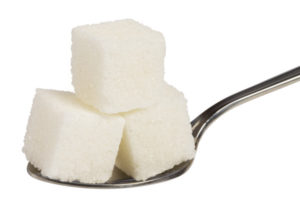 Reduce how much sitting you do each day, by getting off your butt and moving around more. Even if it's just one hour per day. That's what research tells us in how to prevent back pain from worsening in overweight adults.
Reduce how much sitting you do each day, by getting off your butt and moving around more. Even if it's just one hour per day. That's what research tells us in how to prevent back pain from worsening in overweight adults.
A study conducted in Finland found that reducing how much an overweight person sits daily is enough to prevent the worsening of back pain. Study participants (64 overweight or obese adults with metabolic syndrome) were assigned to either of 2 groups: 1) the intervention group where the goal was to reduce sitting (sedentary) time by one hour each day, or 2) the control group that did not change their daily sitting (sedentary) time.
People in the control group (who did not decrease daily sitting time) significantly increased back pain intensity over the 6 months, while the group that sat less each day experienced no change in back pain.
Other studies support the role of walking in preventing back pain episodes.
From Science Daily: Reducing daily sitting may prevent back pain
A new study from the University of Turku in Finland showed that reducing daily sitting prevented back pain from worsening over six months. The result strengthens the current understanding of the link between activity and back pain as well as the mechanisms related to back pain. ...continue reading "Reduce Back Pain By Sitting Less and Moving More"


 One message keeps being supported by research: Eat a diet rich in fruits, vegetables, seeds, nuts, whole grains, legumes, and olive oil. A reason is because this diet is anti-inflammatory. And it turns out that inflammation is at the root of many diseases, including heart disease. And dementia.
One message keeps being supported by research: Eat a diet rich in fruits, vegetables, seeds, nuts, whole grains, legumes, and olive oil. A reason is because this diet is anti-inflammatory. And it turns out that inflammation is at the root of many diseases, including heart disease. And dementia. A diet rich in a variety of healthy foods (fruits, vegetables, whole grains, seeds, nuts, legumes) is important because of all the micronutrients it provides. For example, magnesium. A recent
A diet rich in a variety of healthy foods (fruits, vegetables, whole grains, seeds, nuts, legumes) is important because of all the micronutrients it provides. For example, magnesium. A recent  The artificial sweetener erythritol is added to many foods. However, this sugar substitute (which is often blended with stevia) may cause health problems . A recent small
The artificial sweetener erythritol is added to many foods. However, this sugar substitute (which is often blended with stevia) may cause health problems . A recent small  A recent
A recent  The incidence of both intestinal bowel diseases (IBD) and colorectal cancer is rapidly increasing in developed countries (e.g., US, Canada, Europe). There are many theories over why this is occurring, with most researchers thinking a person's diet plays a role. A big suspect in promoting IBD and colorectal cancer is the Western diet, which has lots of ultra-processed foods and is also low in fiber.
The incidence of both intestinal bowel diseases (IBD) and colorectal cancer is rapidly increasing in developed countries (e.g., US, Canada, Europe). There are many theories over why this is occurring, with most researchers thinking a person's diet plays a role. A big suspect in promoting IBD and colorectal cancer is the Western diet, which has lots of ultra-processed foods and is also low in fiber.
 A recent large
A recent large